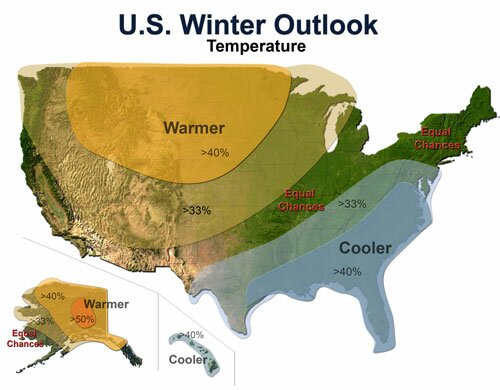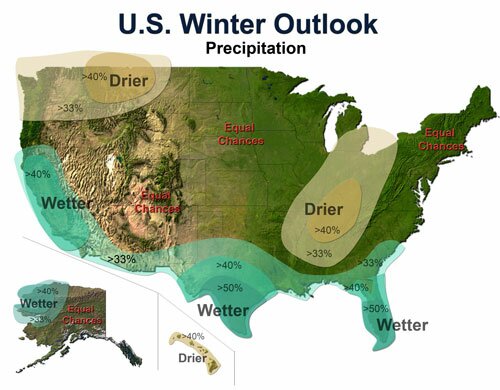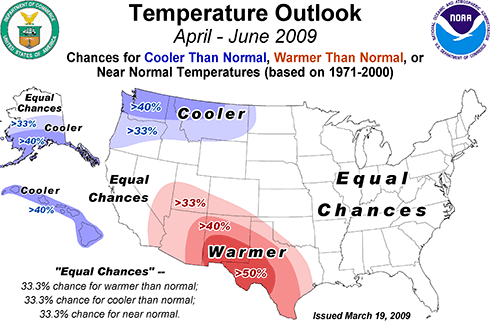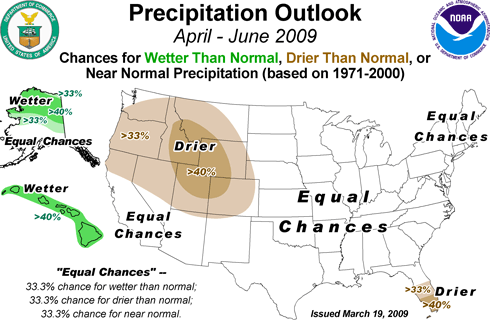2009-10 Winter Weather Forecasts: Cold and Wet
Friday, October 16th, 2009The winter weather forecasts for 2009-2010 have arrived, and there appears to be a lot of agreement between the three I have reviewed so far. This winter (December through February) is likely to be affected by an El Nino episode that alters the jetstream patterns, especially the southern branch, bringing a colder, wetter winter for most of the southeast and mid-Atlantic States.
The Weather Service predicts a better than 40% chance of cooler than normal weather in Virginia, North Carolina and Georgia, and the southern half of Alabama, Mississippi and Louisiana. Kentucky, Tennessee, and the northern half of the deep South are also likely to be cooler than normal. Much warmer than normal conditions are expected in the northern Great Plains and Rocky Mountain states, with warmer than normal conditions in Wisconsin, and stretching south into Nebraska and New Mexico.

The Accuweather winter forecast restricts the much below normal temperatures to Tennessee, Alabama and Mississippi, along with northern Georgia, western Virginia, and the western Carolinas. They predict above or below normal temperatures for the entire country, with no area set for normal temperatures.
The Weather Service precipitation outlook calls for a much greater chance of rain in Florida south of Orlando and in south Texas, with above normal precipitation in southern Georgia, most of Texas, and in California. Drier than normal weather is expected in the mid-Mississippi valley and in the northwest. The rest of the country has equal chances of above or below normal precipitation.
The Accuweather forecast brings the above-normal precipitation chances further north, covering the Carolinas, Georgia, Alabama, Mississippi, and west to New Mexico, and north into California. Dry conditions are expected in the midwest and upper Northwest.

All of this means that the metro Atlanta area has a better than normal chance of seeing snow or ice this winter, especially when compared to the last few years. And that is what WSB Radio meteorologist Kirk Melhuish says in his preliminary winter outlook. Melhuish predicts normal temperatures and above normal precipitation in the Atlanta area, with an above normal chance of ice and snow. He will issue a final outlook around Thanksgiving.
Sphere: Related Content


